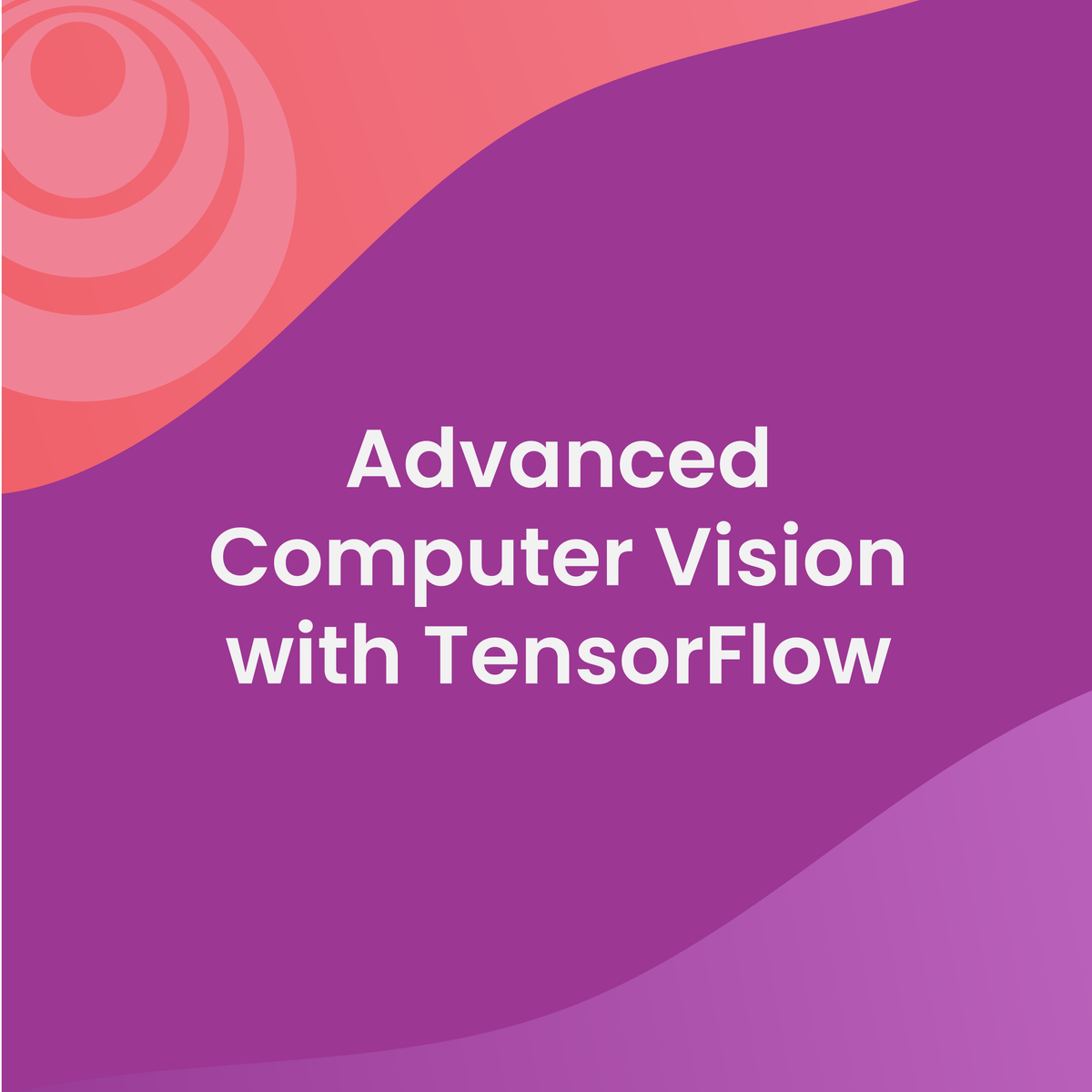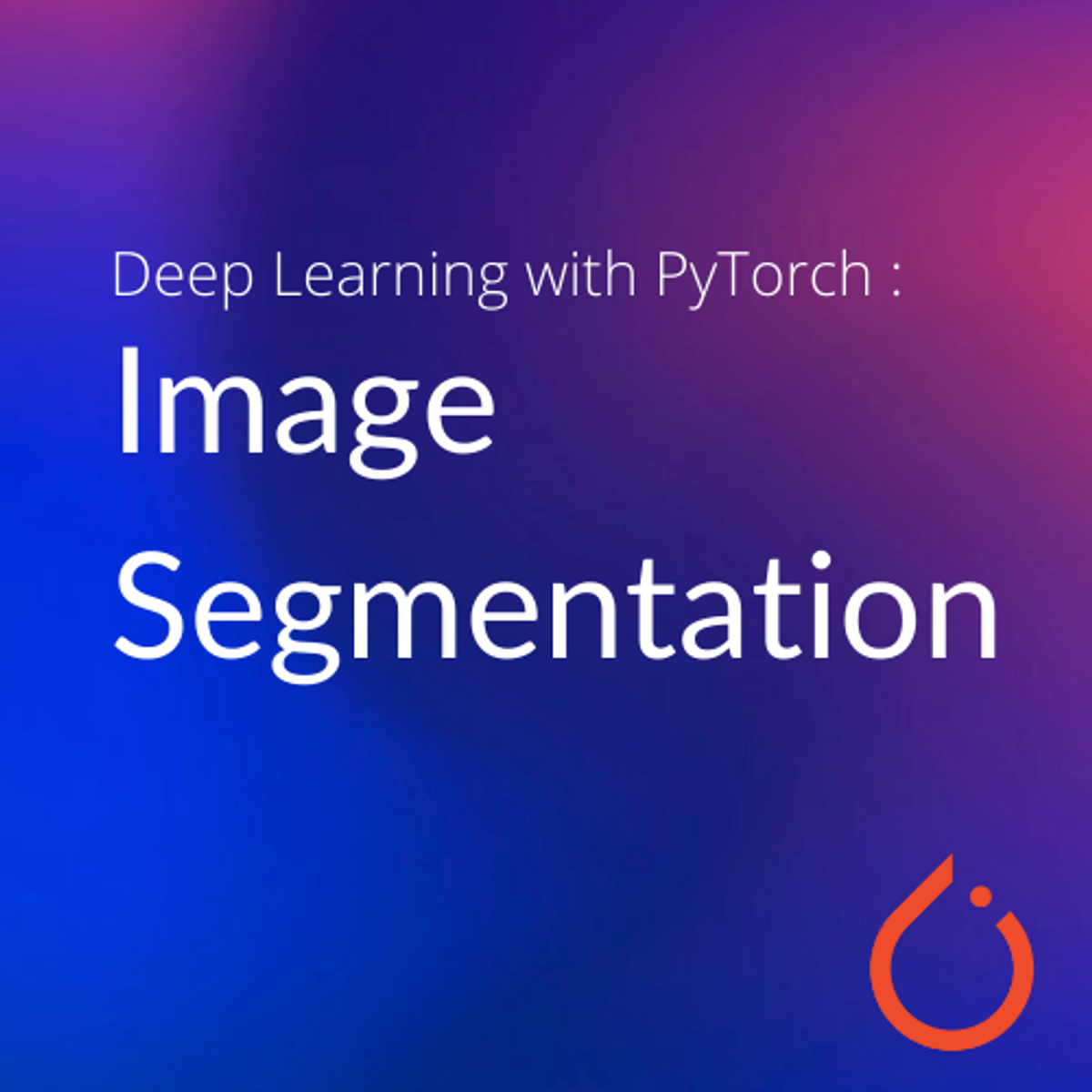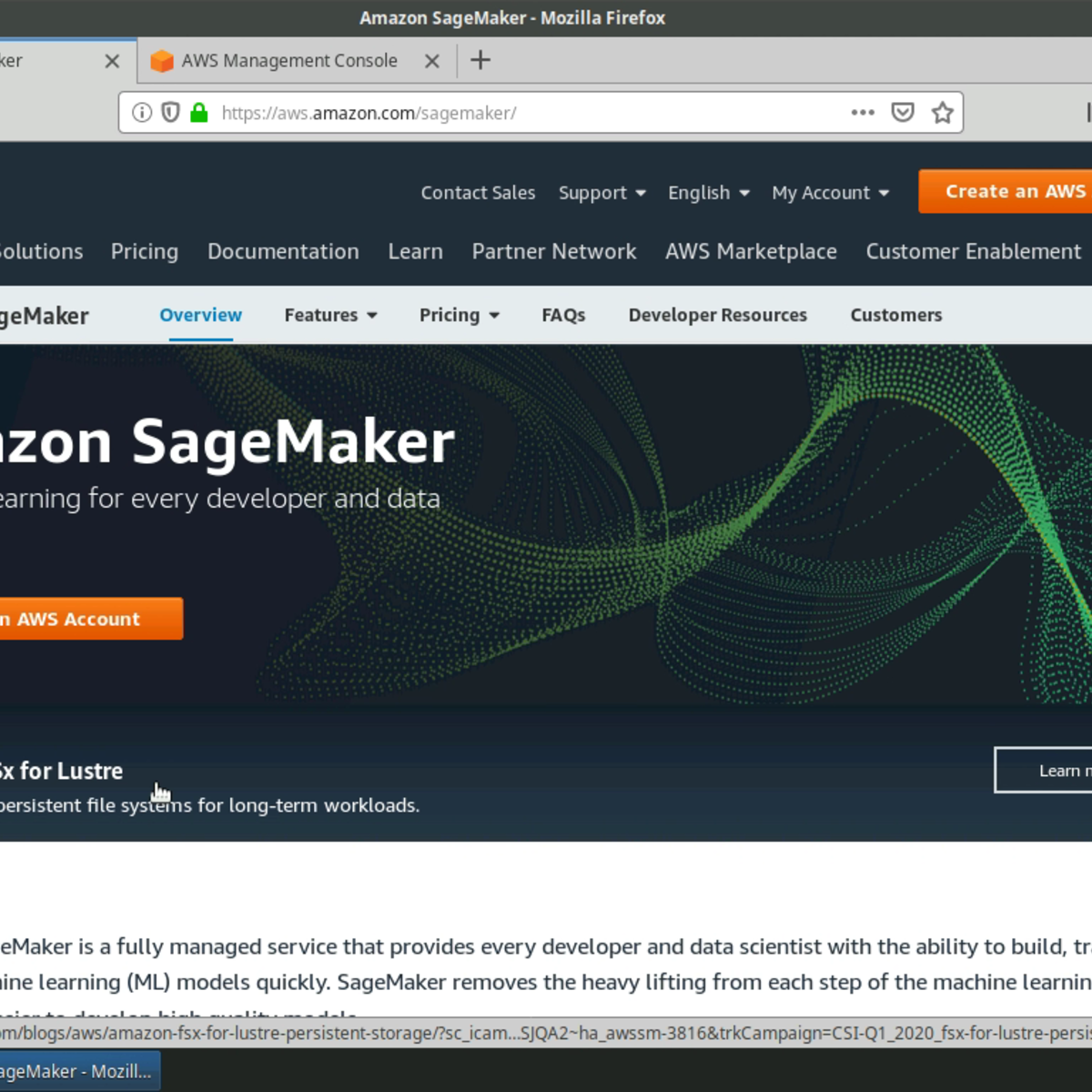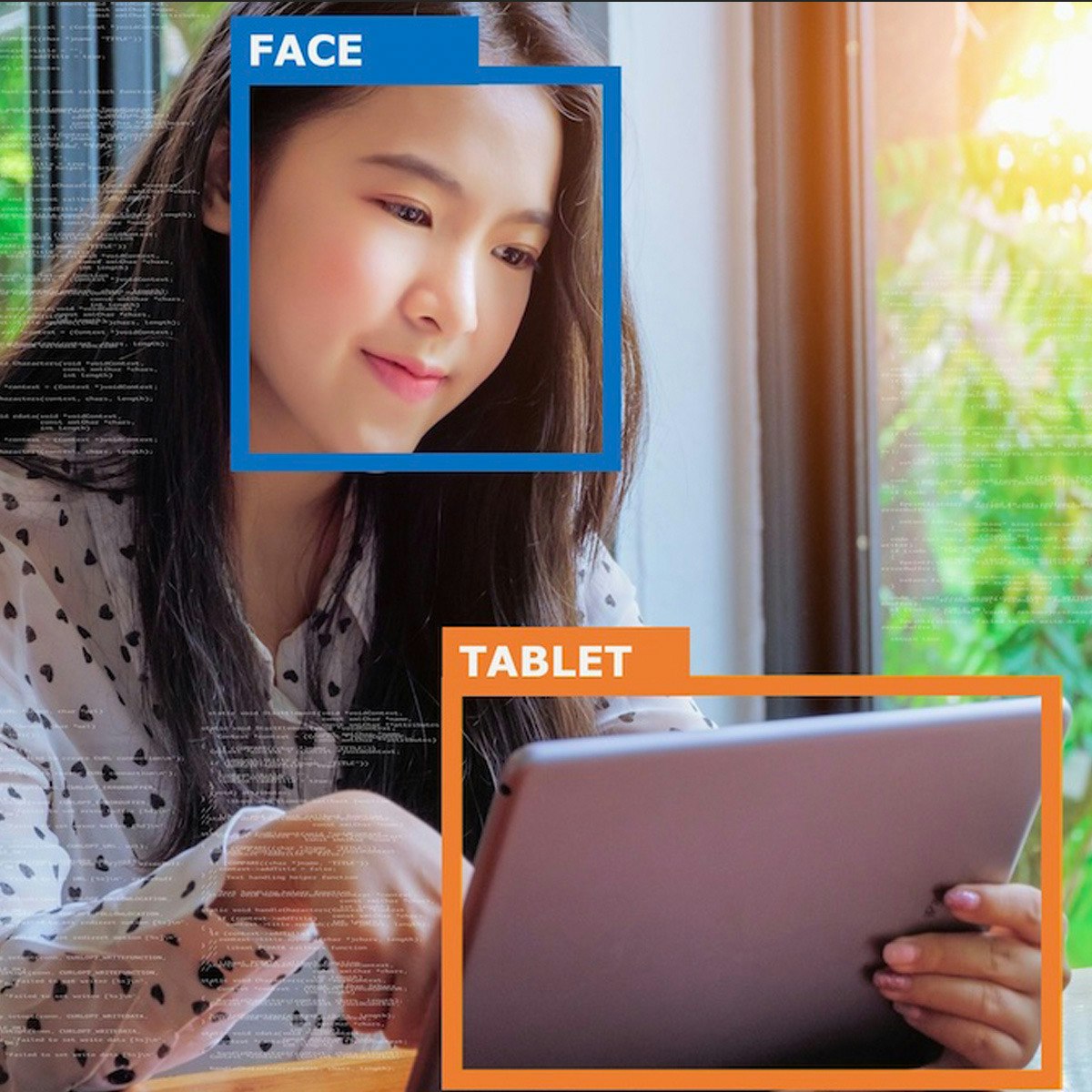Image Segmentation
A Deep Dive into Image Segmentation
Image segmentation is a fundamental process in computer vision that involves partitioning a digital image into multiple segments, or sets of pixels, often corresponding to different objects or parts of objects. Think of it like digitally cutting out and labeling all the distinct items in a photograph. The primary goal is to simplify or change the representation of an image into something that is more meaningful and easier for computers to analyze. This capability is crucial for a wide array of applications, from helping self-driving cars "see" pedestrians to enabling doctors to identify tumors in medical scans.
Working in image segmentation can be incredibly engaging. It's a field at the forefront of artificial intelligence, offering the chance to develop systems that can interpret the visual world with increasing sophistication. You might find yourself creating algorithms that power the next generation of autonomous vehicles, or contributing to breakthroughs in medical diagnostics by enabling more precise analysis of complex imagery. The rapid evolution of techniques, particularly with the rise of deep learning, means there's always something new to learn and explore.
What is Image Segmentation?
At its core, image segmentation is about assigning a label to every pixel in an image such that pixels with the same label share certain characteristics. These characteristics could be color, intensity, texture, or other computed properties. The result is a set of segments that collectively cover the entire image, or a set of contours that outline the objects within it. This process essentially transforms a raw image into a more structured representation, making it easier for a computer to "understand" its content.
Imagine you have a picture of a cat sitting on a rug in a living room. Image segmentation would aim to identify all the pixels that belong to the "cat," all the pixels that make up the "rug," and all the pixels that constitute the "background" or other objects like "furniture." Each of these identified areas is a segment.
This level of detail is what distinguishes image segmentation from other related computer vision tasks. For instance, image classification might simply label the entire picture as "contains a cat." Object detection would go a step further and draw a bounding box around the cat. Image segmentation, however, provides a pixel-level outline of the cat, offering a much more precise understanding of its shape and boundaries.
Key Applications
The ability to precisely identify and delineate objects within an image has far-reaching implications across numerous fields. In medical imaging, segmentation is used to locate tumors, measure tissue volumes, and aid in surgical planning by analyzing MRI, CT, and ultrasound scans. Autonomous vehicles rely heavily on image segmentation to distinguish pedestrians, other vehicles, lane markings, and traffic signs, which is critical for safe navigation.
Beyond these, image segmentation is integral to robotics for object recognition and manipulation, enabling robots to interact with their environment. In agriculture, it helps in analyzing crop health and estimating yields from aerial or satellite imagery. Security and surveillance systems use segmentation for tasks like facial recognition and tracking objects or individuals. Even in areas like retail, it can be used for inventory management by analyzing images of shelves, and in environmental monitoring through satellite image analysis.
Relationship to Broader Fields
Image segmentation is a specialized area within the broader field of computer vision. Computer vision, in turn, is a subfield of artificial intelligence (AI) that enables computers to interpret and understand visual information from the world, much like human vision.
Many modern image segmentation techniques, especially the most powerful ones, are built upon principles of machine learning and, more specifically, deep learning. Machine learning algorithms allow systems to learn from vast amounts of data (in this case, labeled images) to identify patterns and make predictions or classifications. Deep learning, a subset of machine learning, utilizes complex neural network architectures to achieve high levels of accuracy in tasks like segmentation. Therefore, a strong understanding of these overarching fields is often essential for anyone looking to delve deeply into image segmentation.
Core Techniques in Image Segmentation
Image segmentation techniques span a wide range, from traditional algorithms based on image properties to sophisticated deep learning models. The choice of technique often depends on the specific application, the nature of the images, and the desired level of accuracy and detail.
Traditional Approaches: Thresholding and Region-Based Methods
Thresholding is one of the simplest methods of image segmentation. It works by setting a threshold value for pixel intensity. Pixels with intensity values above the threshold are assigned to one segment (e.g., foreground), and those below are assigned to another (e.g., background). This is particularly effective for images with high contrast between objects and the background. Variations include global thresholding (one threshold for the entire image) and adaptive thresholding (different thresholds for different regions of the image).
Region-based methods aim to group pixels into regions based on similarity criteria. Region growing is a common technique where you start with "seed" pixels and iteratively add neighboring pixels to the region if they meet certain similarity criteria (e.g., similar color or intensity). The process continues until no more pixels can be added. Conversely, region splitting and merging starts with the entire image as one region and recursively splits it into smaller, more homogeneous regions. Then, adjacent regions that are similar are merged.
These courses offer a good starting point for understanding foundational image processing concepts, including some traditional segmentation methods.
Clustering Approaches
Clustering algorithms, like K-means, can be adapted for image segmentation. In this context, pixels are treated as data points in a feature space (e.g., based on color values and/or spatial coordinates). The K-means algorithm then partitions these pixels into K clusters, where pixels within the same cluster are more similar to each other than to those in other clusters. Each cluster then represents a segment in the image. This is a form of unsupervised learning, as it doesn't require pre-labeled data for the specific image being segmented, though the number of clusters (K) often needs to be predefined.
This project-based course provides hands-on experience with K-means for image segmentation.
Deep Learning Architectures
Deep learning has revolutionized image segmentation, offering significantly higher accuracy and the ability to handle much more complex scenes. Convolutional Neural Networks (CNNs) are the backbone of most deep learning-based segmentation models. Architectures like U-Net and Mask R-CNN are particularly prominent.
U-Net was originally designed for biomedical image segmentation and is characterized by its U-shaped architecture. It consists of an "encoder" path that captures context and a "decoder" path that enables precise localization. Skip connections between the encoder and decoder paths help preserve high-resolution details, leading to accurate segmentation masks. Many courses and projects now cover U-Net and similar architectures due to their effectiveness.
Mask R-CNN extends object detection frameworks (like Faster R-CNN) to perform instance segmentation. This means it not only detects objects in an image and classifies them but also generates a precise segmentation mask for each individual instance of an object. This is more granular than semantic segmentation, which assigns a class label to each pixel but doesn't distinguish between different instances of the same class (e.g., it would label all "cars" as one category, while Mask R-CNN would outline each individual car).
These courses delve into deep learning for computer vision, including segmentation models.
Edge Detection and Contour-Based Methods
Edge detection techniques focus on identifying points in an image where there are sharp changes in intensity, which often correspond to the boundaries of objects. Algorithms like Canny, Sobel, and Laplacian operators are common for detecting these edges. Once edges are detected, they can be linked to form contours, which then define the segments. While edge detection can be a component of more complex segmentation pipelines, it can sometimes struggle with noisy images or images where object boundaries are not well-defined. Contour-based methods, also known as active contour models or "snakes," iteratively evolve a curve to fit object boundaries based on image gradients and other forces.
These books provide comprehensive coverage of computer vision principles, including various segmentation techniques.
Historical Development of Image Segmentation
The journey of image segmentation mirrors the broader evolution of computer science and artificial intelligence. Understanding its history provides context for the current state-of-the-art and highlights the transformative impact of technological advancements.
Early Algorithms (1960s-1980s)
The earliest attempts at image segmentation date back to the 1960s and 1970s, alongside the nascent field of digital image processing. Initial algorithms were often heuristic, relying on relatively simple image properties. Thresholding techniques, based on pixel intensity values, were among the first to be explored. Edge detection operators, like the Roberts cross and Sobel filter, were developed to find boundaries between regions. Region growing methods also emerged during this period, attempting to group pixels based on local similarity. These early methods, while foundational, were often limited by computational power and struggled with complex or noisy images.
Impact of Increased Computational Power (1990s-2000s)
The 1990s and 2000s saw significant progress, largely fueled by the rapid increase in computational power and the availability of more sophisticated mathematical tools. More advanced algorithms were developed, including active contour models ("snakes") and graph-based methods like normalized cuts, which framed segmentation as a graph partitioning problem. Techniques like watershed segmentation, which treats an image as a topographic map, also gained traction. Machine learning concepts began to be applied, though not yet with the dominance they have today. These methods offered better performance but still faced challenges with variability in image conditions and the complexity of real-world scenes.
Revolution from Deep Learning (2010s-Present)
The 2010s marked a paradigm shift with the advent of deep learning, particularly Convolutional Neural Networks (CNNs). The availability of large labeled datasets (like ImageNet) and powerful GPUs for parallel processing enabled the training of very deep and complex neural network architectures. Fully Convolutional Networks (FCNs) demonstrated that CNNs could be trained end-to-end for dense pixel-wise prediction, leading to significant breakthroughs in semantic segmentation. Architectures like U-Net, SegNet, and later, more complex models like DeepLab and Mask R-CNN, pushed the boundaries of accuracy and capability. This deep learning revolution has made image segmentation far more robust, versatile, and applicable to a wider range of challenging real-world problems than ever before, and it continues to be an active area of research and development.
Exploring the history of computer vision can provide further context.
Formal Education Pathways
A strong educational foundation is typically essential for a career in image segmentation, given its technical depth and reliance on concepts from computer science, mathematics, and engineering. While passion and self-study can go a long way, formal education often provides the structured learning and theoretical understanding required for advanced roles.
Relevant Undergraduate Courses
If you're an undergraduate student interested in image segmentation, a bachelor's degree in Computer Science, Electrical Engineering, Mathematics, or a closely related field is an excellent starting point. Look for courses that cover fundamental areas such as:
- Data Structures and Algorithms: Essential for efficient programming and understanding how segmentation algorithms are built.
- Linear Algebra: Crucial for understanding transformations, feature spaces, and many machine learning concepts.
- Calculus and Probability & Statistics: Foundations for machine learning, image processing operations, and performance evaluation.
- Digital Image Processing: Directly covers topics like image filtering, enhancement, and basic segmentation techniques.
- Computer Vision: Provides a broader overview of how computers "see," including topics like object recognition, 3D reconstruction, and motion analysis, often with a significant component on segmentation.
- Machine Learning: Introduces the core principles of how systems learn from data, which is vital for modern segmentation approaches.
Many universities offer specialized courses in these areas. For example, courses titled "Image Processing and Computer Vision" or similar often provide a direct pathway.
These introductory courses can complement a formal curriculum or provide an initial taste of the field.
Graduate Research Opportunities
For those aiming for research-oriented roles or more specialized positions, graduate studies (Master's or Ph.D.) are often necessary. Graduate programs offer the opportunity to delve much deeper into specific areas of image segmentation and computer vision. Research opportunities at this level might involve developing novel segmentation algorithms, applying existing techniques to new problem domains (e.g., a specific type of medical imaging or a unique industrial inspection task), or exploring the theoretical underpinnings of segmentation models.
When considering graduate programs, look for universities and faculty members whose research aligns with your interests in image segmentation. Many institutions have dedicated computer vision labs or research groups focusing on areas like medical image analysis, robotics, or AI-driven image understanding. These environments provide access to mentorship, resources, and collaboration opportunities that are invaluable for advanced study and research.
PhD-Level Specialization Areas
At the Ph.D. level, specialization becomes even more focused. Doctoral candidates in image segmentation might concentrate on areas such as:
- Novel Deep Learning Architectures: Designing new neural network models specifically for segmentation tasks, perhaps focusing on efficiency, accuracy for specific image types, or unsupervised/semi-supervised learning.
- 3D Image Segmentation: Extending 2D segmentation techniques to volumetric data, crucial for medical imaging (MRI, CT scans) and some industrial applications.
- Video Segmentation: Segmenting objects across sequences of frames, which introduces temporal consistency challenges.
- Interactive and Weakly Supervised Segmentation: Developing methods that require less detailed annotation, making it easier to train models on large datasets.
- Explainable AI (XAI) for Segmentation: Creating models whose decision-making processes are more transparent and understandable, which is critical in fields like medicine.
- Real-time Segmentation: Optimizing algorithms for speed to enable applications like autonomous driving and live video analysis.
A Ph.D. is typically required for academic research positions and many advanced industrial research scientist roles.
Laboratory and Research Institution Requirements
Working in a laboratory or research institution, whether academic or industrial, usually requires a strong portfolio of research, often demonstrated through publications in peer-reviewed conferences and journals. Practical experience with relevant tools and programming languages (Python, C++, MATLAB) and deep learning frameworks (TensorFlow, PyTorch) is also essential. Collaboration skills are important, as research is often a team effort. For some roles, particularly in industry, experience with deploying models in real-world systems can be a significant advantage.
Consider these courses to deepen your understanding of advanced topics relevant to research.
Online Learning and Self-Directed Study
For individuals looking to enter the field of image segmentation, upskill, or explore it without committing to a full degree program, online learning and self-directed study offer flexible and accessible pathways. The wealth of resources available today can empower ambitious learners to build a strong foundation and even develop advanced expertise.
Online courses are highly suitable for building a foundational understanding of image segmentation and its prerequisite topics like programming, mathematics, and machine learning. They often provide structured curricula, expert instruction, and sometimes even hands-on projects. Professionals can use online courses to stay updated with the latest techniques and tools, while students can supplement their formal education with specialized knowledge not covered in their university's curriculum. OpenCourser itself is a valuable resource for finding and comparing such courses from various providers. You can easily browse through thousands of courses in Computer Science and related fields.
Foundational Programming Skills Required
A solid grasp of programming is non-negotiable for image segmentation. Python is overwhelmingly the most common language in the field due to its extensive libraries for scientific computing, machine learning (e.g., Scikit-learn), and deep learning (e.g., TensorFlow, PyTorch). Libraries like OpenCV are indispensable for image processing tasks.
Familiarity with C++ can also be beneficial, especially for performance-critical applications or when working with legacy codebases, but Python is generally the primary language for development and research. Understanding data structures, algorithms, and software development best practices will make your learning journey smoother and your projects more robust.
These courses can help build or strengthen your Python and OpenCV skills.
Project-Based Learning Strategies
Theoretical knowledge is important, but practical application is where true understanding develops. Engaging in project-based learning is one of the most effective ways to master image segmentation. Start with simpler projects, such as segmenting well-defined objects in clean images using basic thresholding or clustering. As your skills grow, tackle more complex challenges:
- Implement research papers: Try to replicate the results of published segmentation algorithms.
- Participate in online competitions (e.g., on platforms like Kaggle) that involve image segmentation tasks.
- Develop a niche application: Choose a problem you're passionate about (e.g., segmenting a particular type of cell in microscopy images, identifying cracks in pavement from drone imagery) and build a solution.
- Contribute to open-source projects related to computer vision or image segmentation.
Building a portfolio of projects is also crucial for demonstrating your skills to potential employers, especially if you are self-taught or transitioning from a different field.
These project-based courses provide direct experience in implementing segmentation tasks.
Open-Source Tools and Datasets
The image segmentation community benefits immensely from open-source tools and publicly available datasets. Key tools include:
- OpenCV: A comprehensive library for computer vision tasks, including many traditional image processing and segmentation functions.
- Scikit-image: A Python package dedicated to image processing, offering a wide range of algorithms.
- TensorFlow and PyTorch: The leading deep learning frameworks, essential for building and training neural network-based segmentation models.
Numerous datasets are available for training and testing segmentation models. Some popular ones include COCO (Common Objects in Context), Pascal VOC, Cityscapes (for urban scenes), and various medical imaging datasets. Using these standard datasets allows you to benchmark your models against others and understand their performance on established tasks. Many research papers also release their code and custom datasets, providing valuable learning resources.
Certification Relevance in Industry
While a strong portfolio of projects and demonstrable skills are often more valued than certifications alone, certain certifications can add credibility to your profile, especially if you lack formal academic credentials in computer science or AI. Certifications from reputable online course providers or those offered by major tech companies related to machine learning, deep learning, or specific cloud AI platforms can be beneficial.
However, it's crucial to understand that a certification is not a substitute for hands-on experience and a deep understanding of the underlying concepts. Employers in the image segmentation field are typically looking for practical problem-solving abilities and a solid theoretical grasp, which are best demonstrated through projects and technical interviews. If you're considering certifications, view them as a way to structure your learning and validate your knowledge, rather than a guaranteed ticket to a job. The OpenCourser Learner's Guide offers articles on how to best leverage online courses and certificates for career development.
Career Opportunities in Image Segmentation
Expertise in image segmentation opens doors to a variety of exciting and often well-compensated career paths in both industry and academia. As AI and computer vision continue to permeate various sectors, the demand for specialists who can develop and implement sophisticated image analysis solutions is growing.
Industry Roles
Several roles in industry heavily utilize image segmentation skills. A Computer Vision Engineer is a common title, responsible for designing, developing, and deploying computer vision systems, which often include segmentation as a core component. They work on tasks like object detection, recognition, and tracking, applying their knowledge to real-world problems.
A Machine Learning Engineer with a focus on computer vision will also work extensively with image segmentation, particularly in developing and training deep learning models. They are involved in the entire lifecycle of a model, from data preprocessing and augmentation to model architecture selection, training, evaluation, and deployment.
Research Scientists in industrial R&D labs often push the boundaries of image segmentation, developing novel algorithms and techniques. They typically require advanced degrees (Ph.D. is common) and a strong publication record.
Other related roles include Image Processing Engineer, who might focus more on the broader aspects of image manipulation and analysis, including segmentation, and Data Scientists whose work involves visual data.
Academic Career Paths
In academia, a career in image segmentation typically involves roles as a Postdoctoral Researcher, Assistant Professor, Associate Professor, and eventually Full Professor. These positions combine research, teaching, and mentoring students. Academic researchers contribute to the field by publishing novel findings in top-tier conferences and journals, securing research grants, and collaborating with other institutions and industry partners. A Ph.D. is almost always a prerequisite for a tenure-track faculty position. The focus is on advancing fundamental knowledge and training the next generation of experts.
Emerging Sectors Adopting Segmentation Technology
While established in fields like medical imaging and autonomous vehicles, image segmentation is rapidly being adopted by a growing number of sectors:
- Agriculture (Precision Farming): Analyzing drone and satellite imagery for crop monitoring, weed detection, and yield estimation.
- Retail and E-commerce: Automated checkout systems, inventory management, visual search, and virtual try-on applications.
- Geospatial Analysis and Remote Sensing: Land cover mapping, urban planning, environmental monitoring, and disaster response from satellite and aerial images.
- Manufacturing (Quality Control): Automated defect detection on production lines.
- Robotics: Enhancing robot perception for navigation, object manipulation, and human-robot interaction across various industries, from logistics to healthcare.
- Security and Surveillance: Advanced threat detection, facial recognition, and crowd behavior analysis.
- Augmented Reality (AR) and Virtual Reality (VR): Creating more immersive and interactive experiences by accurately segmenting and understanding real-world scenes.
The expanding applications mean more diverse job opportunities are likely to emerge in these and other innovative sectors.
Salary Ranges and Experience Requirements
Salaries for image segmentation roles can be quite competitive, reflecting the specialized skills required. According to various job sites and industry reports, entry-level positions for Computer Vision Engineers or Machine Learning Engineers with a focus on image segmentation might start in the range of $80,000 to $120,000 USD per year in the United States, depending on location, company size, and the specific responsibilities. Mid-level engineers with several years of experience can expect salaries from $120,000 to $180,000+, while senior or lead engineers and research scientists with advanced degrees and significant experience can command salaries well over $200,000, sometimes significantly more, especially in high-demand areas or at top tech companies. For example, ZipRecruiter indicates an average hourly rate for "Image Segmentation Jobs" that translates to a wide annual range, suggesting variability based on specific roles and experience. A Google Careers posting for an Image Processing Engineer lists a base salary range of $147,000-$216,000 plus bonus and equity.
Experience requirements vary by role. Entry-level positions typically require a Bachelor's or Master's degree in a relevant field and strong programming skills, along with some project experience (internships, personal projects, or university coursework). Mid-level and senior roles usually require a Master's or Ph.D. and several years of hands-on experience in developing and deploying computer vision or machine learning models. Research scientist positions almost always demand a Ph.D. and a portfolio of publications. Regardless of the level, a strong portfolio showcasing practical image segmentation projects is highly beneficial.
If you're interested in the medical applications, these courses can be valuable.
This book explores classification techniques often used in conjunction with segmentation in medical imaging.
Ethical Considerations in Image Segmentation
As image segmentation technologies become more powerful and widespread, it is crucial to consider the ethical implications of their development and deployment. Like many AI technologies, image segmentation is not inherently good or bad, but its application can have significant societal consequences.
Bias in Training Datasets
One of the most significant ethical challenges is the potential for bias in training datasets. Machine learning models, including those used for image segmentation, learn from the data they are fed. If this data is not representative of the diverse populations or scenarios in which the technology will be used, the model can inherit and even amplify existing biases. For example, if a facial recognition system is primarily trained on images of one demographic group, it may perform less accurately for other groups, leading to unfair or discriminatory outcomes. Similarly, in medical imaging, if datasets predominantly feature certain patient populations, segmentation algorithms might be less effective for underrepresented groups, potentially exacerbating health disparities. Addressing this requires careful curation of diverse and representative datasets, ongoing auditing for bias, and development of techniques to mitigate bias in models.
Privacy Concerns with Facial Recognition and Other Sensitive Data
Image segmentation is a core component of facial recognition technology, which raises significant privacy concerns. The ability to automatically identify and track individuals in images and videos can be used for surveillance, potentially chilling free speech and association. When segmentation is applied to medical images or other sensitive visual data, there are also risks related to data breaches and the unauthorized use of personal information. Robust data protection measures, anonymization techniques (where appropriate), and clear regulations governing the collection and use of such data are essential to protect individual privacy. Transparency about how these technologies are used is also critical.
Environmental Impact of Model Training
Training large-scale deep learning models, including those for complex image segmentation tasks, can be computationally intensive and consume significant amounts of energy. This has an environmental footprint due to the carbon emissions associated with electricity generation. While the impact of a single model might be small, the cumulative effect of widespread AI development and deployment is a growing concern. Researchers and practitioners are exploring more energy-efficient model architectures, hardware, and training techniques to mitigate this environmental impact. This includes developing smaller, more efficient models (model compression, pruning) and utilizing renewable energy sources for data centers.
Regulatory Compliance Requirements
As AI technologies like image segmentation become more integrated into critical applications (e.g., healthcare, autonomous driving, finance), they are increasingly subject to regulatory scrutiny. Depending on the industry and jurisdiction, there may be specific requirements related to data privacy (e.g., GDPR, HIPAA), safety standards, fairness, and accountability. For instance, medical devices incorporating AI segmentation algorithms must often undergo rigorous validation and approval processes. Developers and organizations deploying image segmentation solutions need to be aware of and comply with relevant legal and ethical frameworks. This is an evolving landscape, and staying informed about new regulations and best practices is crucial for responsible innovation.
Understanding the broader context of AI ethics is important for anyone working in this field.
Current Market Trends and Future Outlook
The field of image segmentation is dynamic, driven by continuous advancements in AI, growing computational power, and expanding applications across diverse industries. Understanding current market trends and the future outlook can help individuals and organizations make informed decisions about engaging with this technology.
Growth Projections in Key Industries
The market for image segmentation is experiencing robust growth, with strong projections across several key industries. The healthcare sector, for instance, continues to be a major driver, with segmentation used for improved medical diagnostics, surgical planning, and drug discovery. The automotive industry's push towards autonomous vehicles heavily relies on sophisticated image segmentation for environmental perception and safety. Other sectors showing significant adoption include retail (for automated checkout and inventory management), security and surveillance, agriculture (for precision farming), and geospatial analytics. According to Fortune Business Insights, the global image segmentation market is projected to grow substantially in the coming years. The increasing integration of AI and machine learning into various business processes is expected to fuel this expansion.
Venture Capital Investment Patterns
Venture capital (VC) investment in AI and computer vision, including image segmentation technologies, has been substantial. Investors are keen on startups that are developing innovative segmentation solutions for specific industry verticals or creating foundational platforms that enable easier development and deployment of these technologies. Areas attracting significant VC interest include AI-powered medical imaging analysis, autonomous systems (not just cars, but also drones and robots), and AI tools for industries like manufacturing and retail. The focus is often on companies that can demonstrate a clear path to commercialization and a strong technological edge. As the technology matures, we may see more investment in solutions that address challenges like data annotation at scale, model interpretability, and real-time performance on edge devices.
Hardware Advancements Enabling New Applications
Advancements in hardware, particularly Graphics Processing Units (GPUs) and specialized AI accelerators like Tensor Processing Units (TPUs), have been a critical enabler for the progress in image segmentation, especially deep learning-based approaches. These processors provide the massive parallel computing capabilities required to train complex neural networks and perform inference (i.e., run the models) efficiently. The ongoing development of more powerful and energy-efficient hardware is making it possible to deploy sophisticated segmentation models in real-time applications and on resource-constrained edge devices (e.g., smartphones, embedded systems in cars). This opens up new possibilities for applications that were previously infeasible due to computational limitations.
Potential Disruption from Quantum Computing
While still in its early stages of development, quantum computing holds the potential to eventually disrupt many areas of computation, including aspects of machine learning and image processing. For image segmentation, quantum algorithms could potentially offer speedups for certain types of optimization problems or enable the analysis of much larger and more complex datasets than currently feasible. However, practical, large-scale quantum computers are still some way off, and the development of quantum algorithms specifically tailored for image segmentation is an active but nascent area of research. It's a long-term prospect, but one that researchers in the field are beginning to explore. For the foreseeable future, classical computing, powered by GPUs and other AI accelerators, will remain the workhorse for image segmentation.
To keep abreast of the rapidly evolving field, courses focusing on the latest deep learning techniques are invaluable.
Technical Challenges in Modern Image Segmentation
Despite significant advancements, particularly with deep learning, image segmentation still faces several technical challenges. Addressing these hurdles is the focus of much ongoing research and development in the computer vision community.
Handling Low-Quality or Noisy Input Data
Real-world images are often far from perfect. They can suffer from issues like poor lighting, blur, occlusions (where one object partially hides another), sensor noise, or low resolution. Segmentation algorithms, especially those trained on clean, high-quality datasets, can struggle significantly when faced with such imperfect inputs. Developing models that are robust to these variations and can still produce accurate segmentations is a major challenge. Techniques like data augmentation (artificially creating noisy or varied training examples), domain adaptation (adapting models trained on one type of data to perform well on another), and designing more resilient model architectures are active areas of research.
Real-Time Processing Constraints
Many applications, such as autonomous driving, robotics, and interactive medical imaging, require image segmentation to be performed in real-time or near real-time. However, highly accurate deep learning models can be computationally very expensive, making them too slow for these time-sensitive tasks. There's often a trade-off between accuracy and speed. The challenge lies in developing lightweight model architectures, efficient inference algorithms, and leveraging hardware acceleration (like GPUs or specialized AI chips) to achieve the necessary processing speeds without an unacceptable loss in segmentation quality. Model compression techniques, such as pruning and quantization, also play a role here.
These courses touch upon deploying models and considerations for real-time applications.
Generalization Across Domains
A common issue in machine learning is model generalization: how well a model trained on one dataset or in one specific environment performs on new, unseen data or in different environments. Image segmentation models can suffer from poor generalization when deployed in a domain that is significantly different from their training domain (e.g., a model trained on daytime city street scenes may perform poorly on nighttime rural road images). This is often due to "domain shift," where the statistical properties of the input data change. Techniques to improve generalization include training on more diverse datasets, domain adaptation methods, and developing models that learn more invariant features. Ensuring models are robust and reliable across various conditions is crucial for real-world deployment.
Interpretability of Complex Models
Modern deep learning models for image segmentation, while powerful, are often considered "black boxes" because their internal decision-making processes can be very difficult to understand. This lack of interpretability is a significant concern, especially in critical applications like medical diagnosis, where understanding why a model made a particular segmentation decision is essential for trust and validation. If a model makes an error, it's hard to diagnose and fix the problem without understanding its reasoning. The field of Explainable AI (XAI) aims to develop techniques to make these complex models more transparent and interpretable. For image segmentation, this might involve visualizing which parts of an image influenced the model's output or generating human-understandable explanations for segmentation results.
This book offers a modern approach to computer vision, which includes tackling complex scenarios.
Morphological analysis can be key to refining segmentation in challenging conditions.
Frequently Asked Questions (Career Focus)
Embarking on or transitioning into a career in image segmentation can bring up many practical questions. Here are answers to some common queries that might be on your mind.
Is image segmentation expertise in high demand?
Yes, expertise in image segmentation is currently in high demand. This is driven by the rapid advancements in AI and computer vision and their increasing application across numerous industries, including autonomous vehicles, healthcare, robotics, retail, and geospatial analysis. Companies are actively seeking professionals who can develop and implement systems that can accurately interpret visual information. As more industries discover the value of visual data, this demand is likely to continue growing. Many job postings for roles like Computer Vision Engineer, Machine Learning Engineer, and Research Scientist list image segmentation as a required or desired skill.
What programming languages are most valuable?
Python is overwhelmingly the most valuable programming language for image segmentation. Its extensive ecosystem of libraries for scientific computing (NumPy, SciPy), image processing (OpenCV, Scikit-image), and deep learning (TensorFlow, PyTorch) makes it the de facto standard in the field.
C++ is also valuable, particularly for performance-critical applications, deploying models on embedded systems, or when working with large existing C++ codebases. Some engineers develop core algorithms in C++ for speed and then create Python wrappers for ease of use and integration. Familiarity with MATLAB can also be useful, as it has strong image processing toolboxes and is used in some research and academic settings, though Python has become more dominant in industry.
How to transition from software engineering to this field?
Transitioning from a general software engineering role to image segmentation requires a focused effort on acquiring specialized knowledge and skills. Here's a potential path:
- Strengthen Math Foundations: Brush up on linear algebra, calculus, probability, and statistics, as these are fundamental to understanding machine learning and image processing.
- Learn Python and Key Libraries: If not already proficient, master Python and become adept with libraries like NumPy, OpenCV, and deep learning frameworks like TensorFlow or PyTorch.
- Study Image Processing and Computer Vision Fundamentals: Take online courses or read textbooks covering core concepts of image processing (filtering, transformations) and computer vision (object detection, feature extraction), with a specific focus on segmentation techniques. Browsing relevant courses on OpenCourser can be a good starting point.
- Dive into Machine Learning and Deep Learning: Understand the principles of machine learning and then focus on deep learning, particularly Convolutional Neural Networks (CNNs) and architectures used for segmentation (e.g., U-Net, Mask R-CNN).
- Work on Projects: This is crucial. Start with guided projects and gradually move to more independent and complex ones. Implement research papers, participate in competitions, or build a unique application. Create a portfolio to showcase your work.
- Network and Seek Mentorship: Connect with professionals in the field, attend webinars or meetups (even virtual ones), and consider finding a mentor who can guide your learning.
- Tailor Your Resume: Highlight your new skills, projects, and any relevant coursework or certifications.
It takes time and dedication, but a software engineering background provides a strong foundation in programming and problem-solving, which are highly transferable.
These courses could be particularly helpful for software engineers looking to specialize.
Which industries hire the most specialists?
Several industries are major employers of image segmentation specialists:
- Technology Companies: Large tech companies (like Google, Meta, Microsoft, Apple, Amazon) have significant research and development efforts in AI and computer vision, including image segmentation for various applications from search to AR/VR to cloud AI services.
- Automotive: Companies developing self-driving cars and advanced driver-assistance systems (ADAS) are major recruiters.
- Healthcare and Medical Technology: Firms creating medical imaging analysis software, diagnostic tools, and robotic surgery systems.
- Robotics: Companies building robots for manufacturing, logistics, consumer applications, and research.
- Defense and Security: For applications in surveillance, intelligence gathering, and autonomous systems.
- Geospatial and Aerial Imaging: Companies working with satellite, drone, and aerial imagery for mapping, agriculture, and environmental monitoring.
Startups in any of these areas are also significant sources of employment.
Salary comparison between academic and industry roles
Generally, salaries in industry roles for image segmentation specialists are significantly higher than in academic roles, especially at the post-Ph.D. level. Industry positions, particularly in tech companies or well-funded startups, often come with higher base salaries, bonuses, and stock options. Academic salaries (e.g., for professors or postdoctoral researchers) are typically lower and more standardized, though they may offer other benefits like intellectual freedom, teaching opportunities, and a different work-life balance.
However, it's important to consider the total compensation package and non-monetary factors. Some industry research labs offer environments that are quite similar to academia in terms of research focus but with higher pay. The choice often depends on individual career priorities – whether the primary goal is cutting-edge research with potentially higher financial reward in industry, or the pursuit of knowledge, teaching, and mentorship in an academic setting.
Importance of publication records for research positions
For research positions, both in academia (e.g., faculty roles, research scientist at a university lab) and in industrial R&D labs (e.g., Google Research, Meta AI), a strong publication record is usually very important, often essential. Publications in top-tier computer vision, machine learning, and AI conferences (such as CVPR, ICCV, ECCV, NeurIPS, ICML) and reputable journals demonstrate a candidate's ability to conduct novel research, contribute to the field, and communicate their findings effectively. The quality and impact of the publications (e.g., citations, significance of the work) are generally more important than the sheer quantity. For industry roles that are more focused on engineering and product development rather than pure research, a publication record is less critical, though still viewed favorably, while a strong portfolio of practical projects and experience becomes more important.
Building a portfolio without industry experience
Building a compelling portfolio without prior industry experience is crucial for aspiring image segmentation specialists, especially for those who are self-taught or transitioning careers. Here's how:
- Personal Projects: Undertake significant personal projects that showcase your skills. Choose a problem that interests you, define clear goals, implement a solution (ideally using modern techniques like deep learning), and document your process and results thoroughly. Host your code on platforms like GitHub.
- Online Competitions: Participate in image segmentation challenges on platforms like Kaggle. Even if you don't win, the experience of working with real-world datasets and seeing how others approach problems is invaluable. Document your approach and results.
- Replicate Research Papers: Choose influential or interesting research papers in image segmentation and try to implement the described algorithms yourself. This demonstrates your ability to understand and apply cutting-edge techniques.
- Contribute to Open Source: Find open-source computer vision or machine learning projects (e.g., libraries like OpenCV, Scikit-image, or even tools built on top of TensorFlow/PyTorch) and contribute to them. This could involve fixing bugs, adding features, or improving documentation.
- Develop a Blog or Website: Share your projects, tutorials, or insights on a personal blog or website. This not only showcases your work but also your communication skills and passion for the field.
- Capstone Projects (if applicable): If you're taking online courses or in a degree program, put significant effort into your capstone projects, as these can be major portfolio pieces.
Focus on quality over quantity. A few well-executed, complex projects are more impressive than many trivial ones. For each project, be prepared to discuss your design choices, the challenges you faced, and how you overcame them. The "Save to list" feature on OpenCourser can help you organize courses and resources as you build your skills and portfolio.
Embarking on a journey into image segmentation is a commitment to continuous learning in a rapidly evolving field. Whether you choose a formal academic route, self-directed online learning, or a blend of both, the opportunities to contribute to impactful technologies are immense. It requires dedication and a passion for solving complex visual puzzles, but for those who are intrigued by the prospect of teaching computers to "see," it can be an incredibly rewarding path.
















